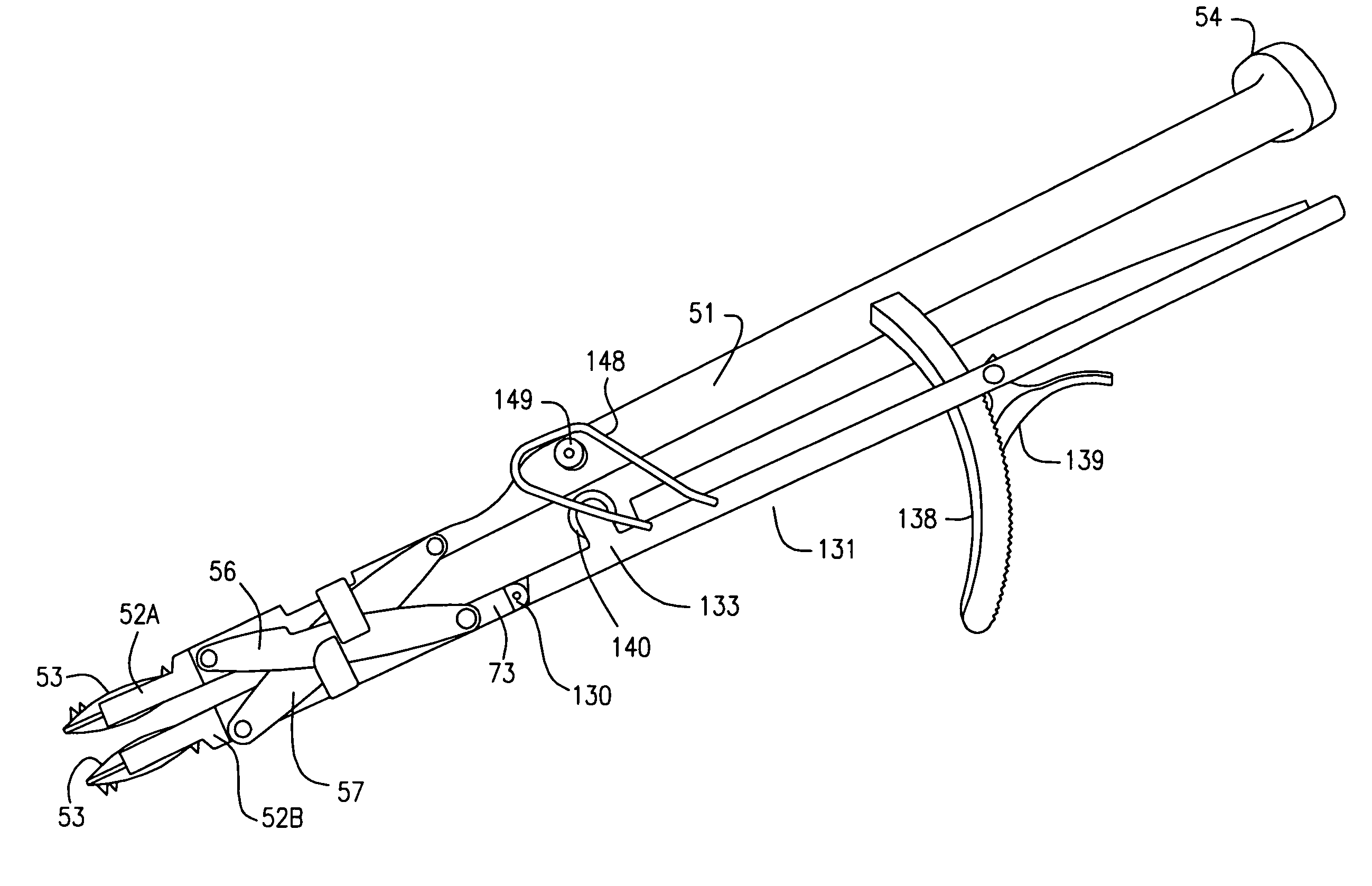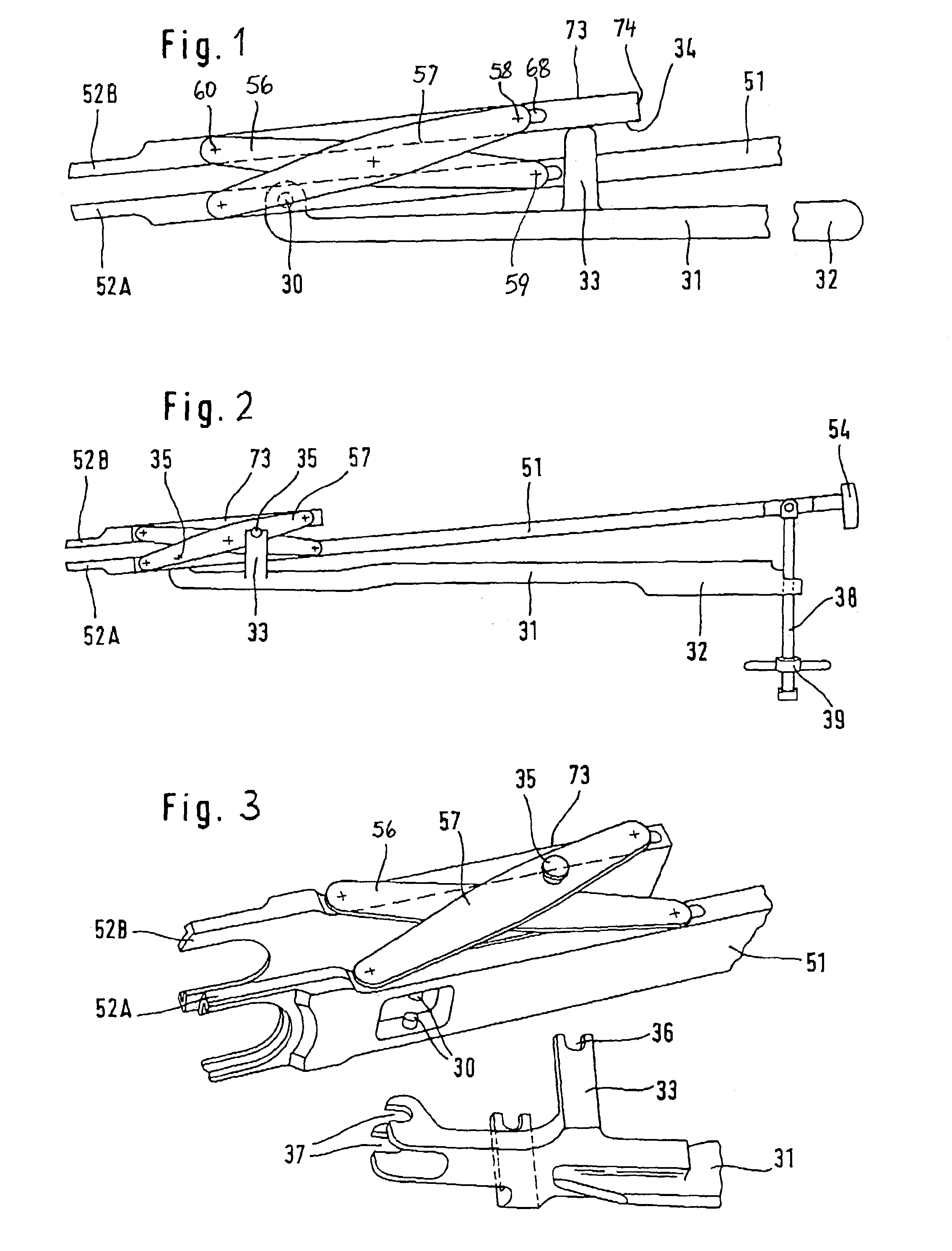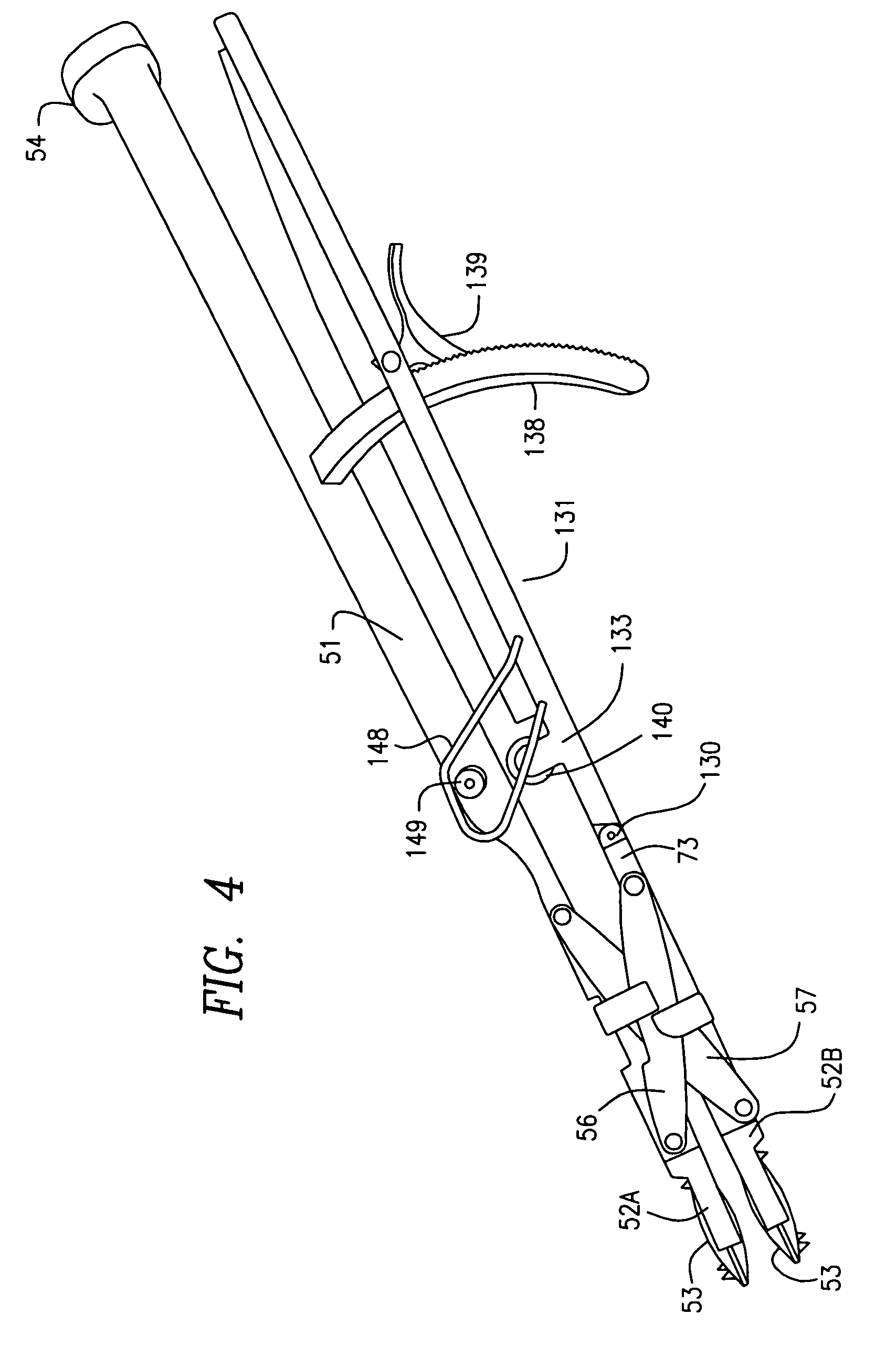Surgical instrument for inserting intervertebral prosthesis
a technology for intervertebral prosthesis and surgical instrument, which is applied in the field of surgical instrument for inserting intervertebral prosthesis, can solve the problems of complex arrangement and do not give the operating surgeon an exact pictur
- Summary
- Abstract
- Description
- Claims
- Application Information
AI Technical Summary
Benefits of technology
Problems solved by technology
Method used
Image
Examples
Embodiment Construction
[0017]At the front end of the instrument body 51 there are two holders 52A and 52B for prosthesis plates 53. The prosthesis holders 52 are fork-shaped and open at the end. Their side branches form guides for the edge of the prosthesis plates 53. Their direction coincides with the longitudinal direction of the instrument body. This has the advantage that the operating surgeon is at all times aware of the orientation of the prosthesis plates, and that the force necessary for driving the prosthesis plates in can be exerted in the instrument direction. By overcoming a frictional force, the prosthesis plates can be inserted into the prosthesis holders 52, and made to slide out of said prosthesis holders 52, in the longitudinal direction of the instrument. At the rear end, the prosthesis body 51 has a strike plate 54. By striking this plate, the prosthesis plates 53 held by the prosthesis holders 52 can be driven in between two vertebral bodies when the prosthesis holders 52 are not sprea...
PUM
 Login to View More
Login to View More Abstract
Description
Claims
Application Information
 Login to View More
Login to View More - R&D
- Intellectual Property
- Life Sciences
- Materials
- Tech Scout
- Unparalleled Data Quality
- Higher Quality Content
- 60% Fewer Hallucinations
Browse by: Latest US Patents, China's latest patents, Technical Efficacy Thesaurus, Application Domain, Technology Topic, Popular Technical Reports.
© 2025 PatSnap. All rights reserved.Legal|Privacy policy|Modern Slavery Act Transparency Statement|Sitemap|About US| Contact US: help@patsnap.com



